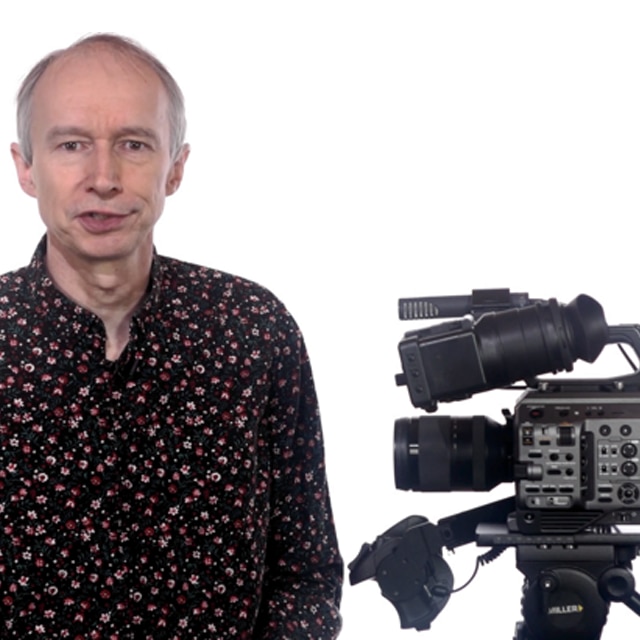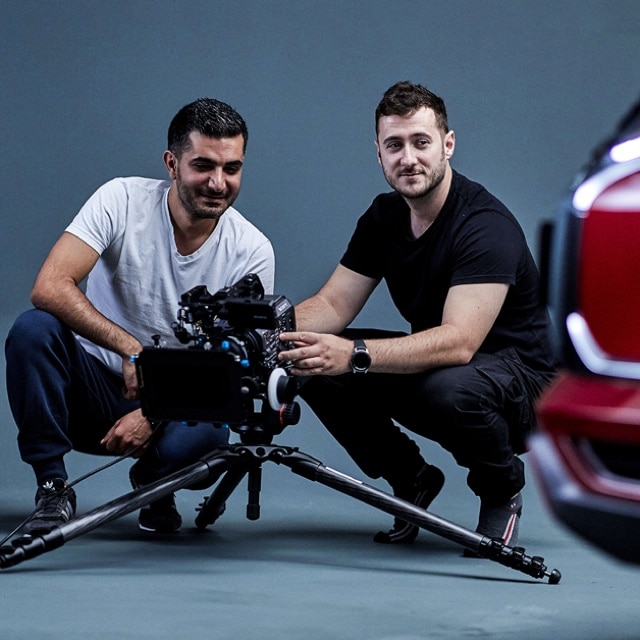Inside story on Zinc’s FX9 investment
Chief Technology Officer Olly Strous reveals detailed decision-making process
Zinc Media Group is one of the UK’s leading producers of factual programming, working with all the UK’s major broadcasters as well as global SVODs. In 2021, Olly Strous joined as its Chief Technology Officer and his strategic vision is at the heart of the company’s technical expansion plans.
In his previous position at ITN, Olly transformed its post-production offering from four to 122 suites, reimagining how a modern post facility operates and delivering over 1,000 hours of content a year. In the process, he became much sought after as a presenter at industry events and technology award judge.
“Technology plays a vital part of any production company’s creative and commercial success,” Olly says. “Innovation through technology enables companies to diversify revenues, drive growth through smart, scalable solutions, improve efficiency and become more responsive to clients’ requirements.”
Zinc has long invested in its own technology with an evolved inhouse post offer and a fleet of Sony PXW-Z280s and PXW-FS7s.
“Owning our own cameras is something that we’ve done for quite a long time and it’s really been driven by the type of content that we make. Where we’ve got returning series it just makes financial and practical sense to own our own equipment.”
Finding the perfect camera
When choosing new cameras, Olly conferred with Zinc’s Head of Kit Room, Alan Thurston and Director of Photography, Andy Walker.
Sony’s PXW-FX9 was an obvious choice due to the company’s positive experience with the FS7, but the team looked at all of the broadcast cameras on the market. As far as Olly was concerned, any technology investment involves measuring price against practical performance, product feature set and operator familiarity to reach a value proposition. “We mapped out all the productions that we do on an average year against the type of cameras that we would use against those productions. We worked out that 70% of our content could be created on the FX9. That just made it an absolute no brainer for us.”
On the back of this research, Zinc bought five Sony PXW-FX9V camera kits. Each camera came with three Sony G Master cine-zoom lenses – the 16-35mm, 24-70mm and 70-200mm, all at F2.8 – that between them, “provide all the framing options a camera operator might require on location”.

Operator familiarity
Zinc’s earlier purchase of Sony FS7s meant the FX9 would be instantly familiar to their pool of freelance camera operators. Olly observes, “If we want to have access to the widest pool of camera operators, we need to have a camera that fits with their skill set.
“With the market gravitational pull towards Sony over recent years” and with the FX9 having “a similar menu structure and similar usability”, Olly sees the FX9 as a, “natural progression from the FS7”. Critically, deploying FX9 didn’t require any additional training for the freelance camera operators.
“From an ergonomic and a usability point of view, Sony have given this camera a lot of thought. All of the buttons are in easy to reach and sensible places. Everything’s designed to be really accessible.”
9/11: Life Under Attack Brook Lapping (a Zinc Media Company) for ITV and France Television

The added value of autofocus
For many shows, Zinc’s crews are following subjects as they go about their daily lives. Often, they have only one opportunity to capture an event or interview – there’s little or no margin for error.
The choice of G Master cine-zoom lenses was linked to the FX9’s auto-focus. “That functionality paired with the Sony glass has been absolutely life changing for us. It’s not just having pinpoint autofocus when you’re doing an interview with your subject constantly moving. It’s also in a run and gun environment where we’re constantly moving, we’ve got a subject and the FX9 can identify that subject and track and keep them in focus.”
Changing light
For on location set-ups, camera crew need to be mobile and rarely have full lighting kits. A camera that can capture high contrast images in fading or low light is a significant benefit; “One of the key features that we love about the FX9 is its low light capability,” says Olly. “We found that we can extract lovely images with a moderate amount of gain without introducing any noise to the picture.”
The FX9’s electronic variable ND filter is, as Olly enthusiastically notes, “absolutely phenomenal for run and gun in changing light conditions,” as it allows the camera operator to change exposure on the fly without having to change other menu settings. Similarly, the dual ISO provides an additional layer of functionality; “we can shoot in near darkness, almost pitch black, and produce an image that is perfectly useable.”

From camera to edit
From his time at ITN, Olly has always looked to find the most efficient turnaround times. By utilising the additional proxy file recording option at the point of capture, the crew can send clips back to base by WiFi. That way an offline edit can progress ahead of the crew returning with the native asset to be relinked in the online.
“One of the really fantastic things that Sony cameras have been able to do for years, and this has flowed through into the FX9, is proxy files. We record the proxy files to a separate SD card. Every time you finish recording, each clip is closed and turned into its own MP4. So, we can then take those MP4 files and upload them to the Sony Ci platform. Sony Ci has the capability to transcode them into edit ready formats which we can then pass to a different Amazon S3 bucket, and pass to a platform such as Lucid Link where we can start editing immediately. That means from the camera to an edit suite automatically.”
Being Gail Porter Tern TV (a Zinc Media Company) for BBC Scotland and Inside The Zoo Tern TV (a Zinc Media Group company) for BBC Scotland

The data computation
Olly’s post-production background gives him a keen insight into how a camera’s final deliverables can support efficient post production workflows. Non-scripted shooting ratios are often very high – each camera operator might be recording hours of content a day, with commensurately high volumes of data. From Olly’s perspective, large pools of data slow down turnaround while adding significant transfer and processing costs throughout the project lifecycle (and even afterwards as archive). Olly is always looking at ways to balance the desire for the best-looking deliverables alongside the business need for efficiency.
Olly has been a “really big fan of XAVC” going back to his days at ITN and now Zinc’s data computation conundrums are resolved by the FX9’s XAVC recording format. “We’re doing a production at the moment that is a really high volume day-time series and XAVC-L, a long GOP codec – 50 MB/s, really small size, really great for high volumes of data, still a 10-bit codec – is working really, really well for us.” Alternative XAVC “flavours” give “incredibly well optimised” options to shoot for UHD, HDR workflows when “we’re looking for a higher bit depth, a higher bit rate”.

A camera for now and for the future
The range of XAVC variants was instrumental in Olly’s decision to purchase the FX9s. It’s “ready for what our clients want now,” Olly says, “intelligent downsampling from Super35 4K to HD delivers super crisp images with exactly the amount of latitude we need.”
For future 4K projects, Olly is confident FX9 has everything he needs due to its ability to shoot S35 and full frame at higher bit rates with more colour latitude and higher contrast for HDR. “One of our clients is looking for that cinematic look and looking for us to shoot in full frame and having this camera in our armoury gives us that capability straight out of the gate.”
Taken overall, Olly is unequivocal about Zinc’s investment in the FX9: “Sony has done a really great job with this camera.”



